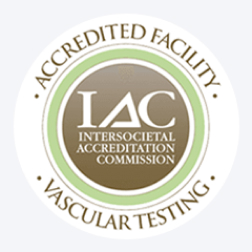Carotid artery disease is a hidden threat, often developing quietly until it’s too late. It happens when the carotid arteries, the main blood vessels supplying your brain, become narrowed or blocked by plaque, a buildup of fat, cholesterol, and other substances.
The tricky part? Many people don’t notice any symptoms until the condition is advanced, making early detection absolutely critical. By knowing the subtle warning signs and understanding your risk factors, you can take action before serious complications like stroke occur.
Understanding Carotid Artery Disease
Carotid artery disease develops when the arteries that carry blood to your brain start to narrow, limiting the flow of oxygen and nutrients your brain depends on.
This narrowing is most often caused by atherosclerosis, a process where fatty deposits called plaque build up inside the artery walls. Over time, this buildup can restrict circulation and raise the risk of a blockage.
Several factors contribute to the development of carotid artery disease, including:
The gradual narrowing of the arteries may go unnoticed for years. This makes regular health check-ups critical for early detection. When identified early, carotid artery disease is manageable.
Treatments and lifestyle adjustments can significantly reduce the risk of stroke and other complications. Understanding this condition empowers individuals to take proactive steps toward maintaining their vascular health.
Why Early Detection Matters
Early detection of carotid artery disease is crucial, as it can prevent serious health issues such as stroke. Stroke remains a leading cause of disability worldwide.
Recognizing carotid artery disease early allows for better management of risk factors and prevention of complications. Prompt evaluation and treatment can slow its progression and greatly improve long-term outcomes.
Recognizing the symptoms, even the subtle ones, is key. Discuss any concerns with your vascular specialist. They can guide you through diagnostic tests and treatment options. By catching carotid artery disease early, you reduce the chance of long-term health issues and improve your quality of life. Remember, proactive health management makes a world of difference.
Common Carotid Artery Disease Symptoms
Carotid artery disease often progresses silently. For many, symptoms don’t appear until the condition is severe. Recognizing symptoms early can prevent serious complications.
Common symptoms to watch for include sudden numbness or weakness. This usually affects the face or limbs, often on one side. Such symptoms might come and go, but they require immediate attention.
Speech difficulties also signal carotid artery issues. This can manifest as trouble speaking or comprehending language. Be mindful of any sudden changes.
Vision problems can occur unexpectedly. This may affect one or both eyes. Blurred or darkened vision should not be ignored.
Some experience dizziness or loss of balance. These symptoms can be sudden and disorienting. They are serious and deserve prompt medical evaluation.
Remember, even transient symptoms warrant attention. They might indicate a transient ischemic attack (TIA), which we will discuss later. If you or someone you know experiences these symptoms, seek medical advice promptly.
Recognizing these warning signs early can make a meaningful difference in your health. Being aware of potential artery blockages allows for timely evaluation and treatment, empowering you to take an active role in protecting your vascular health.

Silent and Subtle Signs: What to Watch For
Some signs of carotid artery disease are very subtle. These can occur without any warning or obvious triggers, so it’s crucial to recognize these less obvious symptoms.
Fatigue and confusion are often overlooked. Persistent tiredness or being easily confused could be significant. They might not seem related to the arteries, but they can be signals.
Recurring headaches can also point to carotid issues. If you’re experiencing frequent headaches without a clear cause, consider consulting a healthcare provider. They might seem harmless, but they deserve attention.
Understanding these subtle indicators is vital. Early intervention can prevent a larger problem. If you notice these signs, it’s wise to seek medical advice. Taking action early is an important step in managing your vascular health.
Transient Ischemic Attack (TIA): A Warning Sign
A Transient Ischemic Attack, or TIA, is often called a mini-stroke. It’s a critical warning sign of carotid artery disease. TIAs are brief but serious.
Symptoms of a TIA can mimic those of a full stroke. They include sudden weakness, numbness, or confusion. Typically, these symptoms resolve within a few minutes to an hour. However, they should never be ignored.
Experiencing a TIA signals that arteries could be blocked. It serves as a major red flag for pending health crises.
Prompt medical evaluation after a TIA can prevent a major stroke. Early intervention is key to ensuring future health and safety.
Risk Factors for Carotid Artery Disease
Understanding the risk factors for carotid artery disease can help you take charge of your health. Some risk factors are lifestyle-related, while others involve personal health history.
High blood pressure is a prominent risk factor, putting extra strain on your blood vessels. This can lead to damage over time. Similarly, high cholesterol contributes to plaque build-up in the arteries, increasing blockage risks.
Smoking is another critical risk factor, as it damages blood vessel walls and lowers blood oxygen levels. Meanwhile, diabetes complicates and accelerates the progression of vascular diseases, including carotid artery disease.
Additional risk factors include:
- Sedentary lifestyle
- Obesity
- Age (increased risk as you get older)
By being aware of these risk factors, you can make informed choices. Healthy lifestyle changes and regular check-ups can reduce your risk, fostering better vascular health.
Diagnostic Tests and When to Seek Help
Recognizing carotid artery disease symptoms early can be challenging. However, several diagnostic tests can pinpoint issues if symptoms or risk factors are present.
If you notice symptoms such as sudden numbness or difficulty speaking, it’s crucial to seek medical help. Healthcare providers often begin with a physical exam and review of your medical history.
Diagnostic tests for carotid artery disease include:
- Ultrasound: This non-invasive test uses sound waves to visualize blood flow.
- CT Angiography: A CT scan combined with a special dye highlights your blood vessels.
- Magnetic Resonance Angiography (MRA): Like an MRI, it provides detailed images of blood vessels.
These tests help confirm a diagnosis and determine the severity of the blockage. Early and accurate detection paves the way for appropriate treatment. Therefore, don’t hesitate to consult your healthcare provider if you suspect any symptoms of carotid artery disease. Your prompt action can be lifesaving.
Treatment Options for Carotid Artery Disease
Once diagnosed, carotid artery disease requires a tailored treatment approach. The right strategy depends on the disease’s severity and the patient’s overall health.
Non-surgical options are often the first line of defense. Medications are commonly prescribed to control blood pressure, lower cholesterol, and prevent blood clots.
For more severe cases, surgical intervention might be necessary. Surgical options include:
- Carotid Endarterectomy: Removing plaque from the artery’s inner lining.
- Carotid Artery Stenting: Inserting a stent to keep the artery open.
These procedures can significantly reduce the risk of stroke. Recovery varies for each patient, but many resume normal activities within weeks.
Collaborating closely with healthcare providers ensures an optimal outcome. Regular follow-ups help monitor the condition and adjust treatment as needed. Proactive management improves quality of life and minimizes complications. Seek expert advice to explore the best treatment path for your condition.
Lifestyle Changes to Lower Your Risk
Making positive lifestyle changes can significantly lower the risk of carotid artery disease. Small, consistent habits yield long-term benefits. Focus on heart-healthy choices in daily life.
Consult with healthcare professionals for personalized recommendations. Adopting these habits helps prevent carotid artery disease and enhance quality of life. Building sustainable routines today leads to a healthier tomorrow.
Take Charge of Your Vascular Health Today with UVVC
Understanding carotid artery disease gives you the power to act early and protect your health. Paying attention to subtle symptoms, knowing your risk factors, and seeking expert guidance can make all the difference in preventing serious complications like stroke.
At United Vein & Vascular Centers, our specialists are here to help you every step of the way, from evaluation and diagnosis to treatment and ongoing care. Don’t wait for symptoms to appear; schedule a consultation today to take proactive control of your vascular health.
Frequently Asked Questions
Early signs can be subtle and may include sudden numbness or weakness in the face, arms, or legs, difficulty speaking, vision changes, or brief episodes of dizziness. Many people experience no symptoms until a serious event occurs.
Risk factors include high blood pressure, high cholesterol, smoking, diabetes, obesity, and a family history of vascular disease. Age and lifestyle habits can also increase your risk.
Diagnosis often involves imaging tests like ultrasound or CT angiography. Treatment ranges from lifestyle changes and medications to minimally invasive procedures or surgery, depending on the severity of the blockage. Early detection is key to preventing stroke or other complications.


